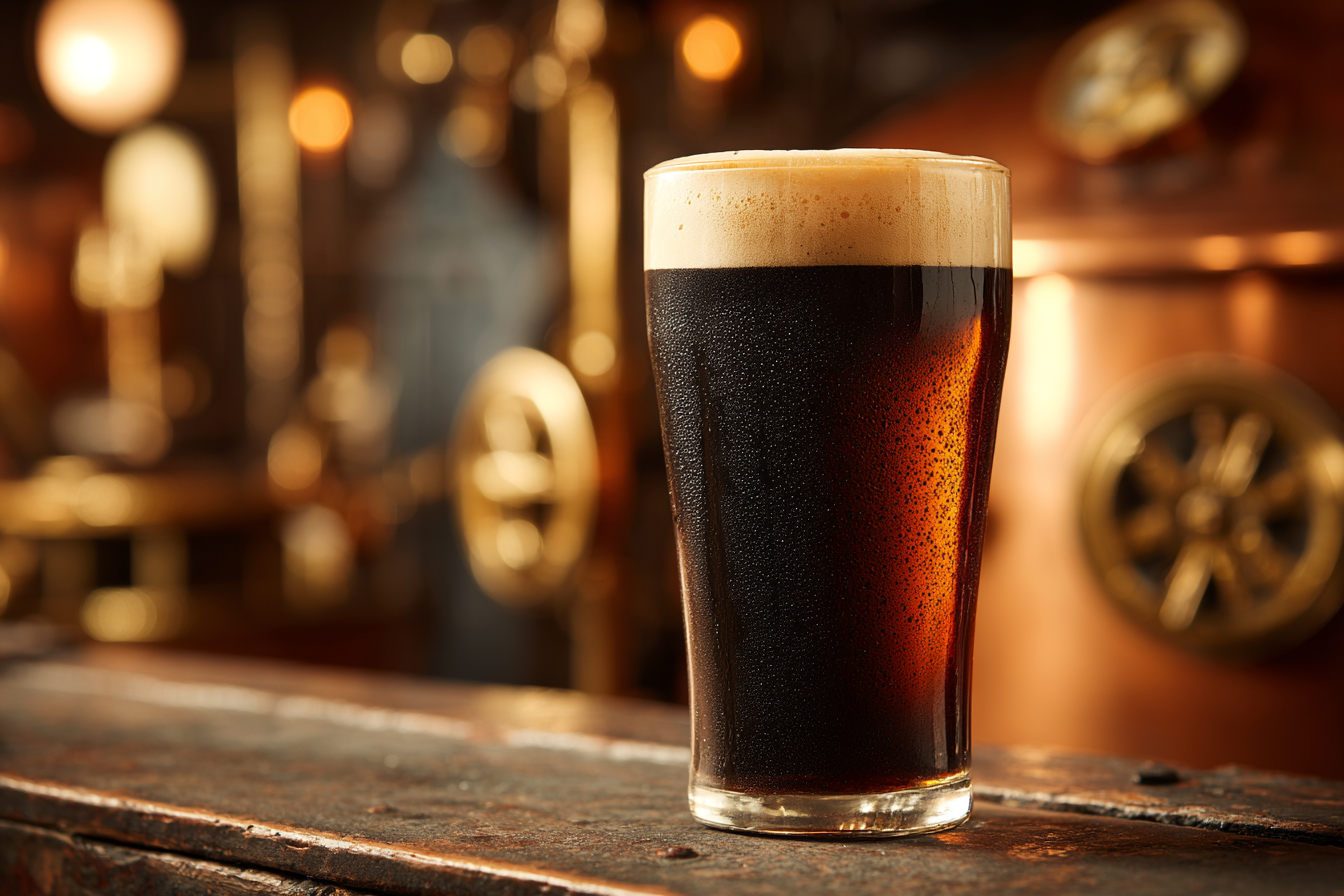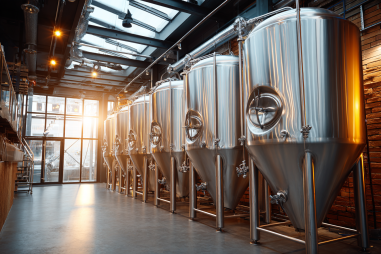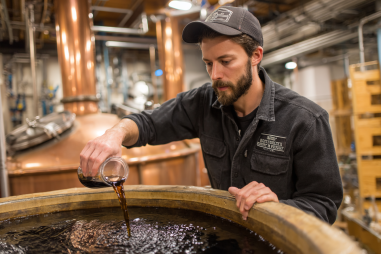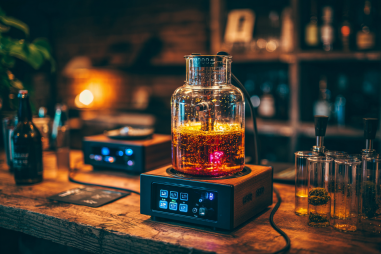American Porter has secured a cherished spot in the world of craft beer, admired for its robust flavor, dark appearance, and rich history. More than just a style of beer, it’s a story that weaves together transatlantic traditions, innovation, and the passion of brewers who sought to put their own spin on a classic. Whether you’re a beer enthusiast or just curious about what makes American Porter unique, understanding its history offers a fascinating glimpse into the evolution of beer culture in the United States and beyond.
Origins of Porter Beer and Its Arrival in America
The roots of American Porter trace back to England in the early 18th century. Porter was originally developed in London around the 1720s and quickly became the drink of choice for market porters, sailors, and workers due to its hearty flavor and affordable price. This style was one of the first beers to gain widespread commercial success, especially because of its use of dark roasted malts that gave it a rich, chocolaty, and slightly smoky taste.
When settlers brought beer traditions across the Atlantic, the English Porter began making its way into the American colonies. However, due to different ingredients and brewing conditions in the New World, a distinct variation began to emerge. Early American brewers adapted the recipe, occasionally adjusting malt types and hopping levels to better suit local palates and available resources. By the 19th century, Porter was a popular style in the U.S., though its profile often shifted depending on regional preferences.
Key Historical Milestones in American Porter Development
American Porter’s exact timeline can be tricky to pin down because the evolution was gradual and marked by several key moments:
- 19th Century Brewing Innovations: With the industrial revolution, brewing technology improved, allowing American breweries to produce Porters on a larger scale. The advent of refrigeration, better malt processing, and advances in yeast cultivation all contributed to greater consistency and quality.
- Prohibition Era Impact (1920-1933): The enforced shutdown of breweries during Prohibition severely disrupted Porter production. Many recipes and brewing traditions were lost or altered as breweries either closed or pivoted to producing “near beer.” This era led to a significant decline in Porter’s prominence.
- Post-Prohibition and Mid-20th Century: After Prohibition, American brewers largely shifted toward lighter lagers that were easier to produce and more commercially successful. As a result, Porter became somewhat of a niche style, maintained primarily by a handful of breweries focused on traditional brews.
- Craft Beer Renaissance (Late 20th Century): It wasn’t until the craft beer movement gained momentum in the 1980s and 1990s that American Porter saw a resurgence. Small breweries began experimenting with robust, flavorful beers, and Porter was embraced for its versatility and depth.
How American Porter Differs from Traditional English Porters
While American Porters undoubtedly owe their heritage to English Porters, several characteristics distinguish them, reflecting local tastes and brewing philosophies. Some key differences include:
- Flavor Profile: Traditional English Porters tend to exhibit more subtle roasted malt flavors, often leaning toward malty sweetness and mild bitterness. American Porters usually bring stronger hop character and a bolder roasted note, sometimes exhibiting coffee or chocolate undertones.
- Hop Varieties and Intensity: American craft brewers often use American hop varieties, which impart citrusy, piney, or floral notes, adding complexity. English Porters rely on more traditional earthy or floral hops, resulting in a softer bitterness.
- Malt Selection: American Porters frequently incorporate a range of specialty malts and may include adjuncts to add layers of flavor. This experimentation contrasts with the relatively restrained malt bills of their English counterparts.
- Alcohol Content: American Porters often have a slightly higher alcohol content (5.5% to 7%) compared to many English Porters, which usually range from 4.5% to 5.4%, reflecting a trend toward more robust brews.
These differences highlight how American brewers have taken the traditional style and made it their own, blending respect for origins with innovation.
Influence of Craft Breweries on Modern American Porter
The explosion of craft breweries across the United States dramatically renewed interest in American Porters. Early pioneers in the craft beer scene recognized Porter’s potential as a canvas for creativity, allowing brewers to explore different malt combinations, hop varieties, and temperature regimes to maximize flavor complexity.
Craft breweries leveraged the American Porter’s balanced profile to craft limited releases and experimental batches, often adding adjuncts such as coffee, vanilla, or smoked malts to enhance depth. This era also saw advances in sensory marketing and storytelling, as brewers educated consumers about the nuances and history behind Porters, helping to cultivate a passionate following.
Moreover, the craft movement prioritized quality and authenticity, resurrecting traditional recipes and integrating modern brewing science. This marriage forged a vibrant modern identity for American Porter, helping it thrive alongside other popular styles like IPA and Stout.
Popular American Porter Brands and Their Historical Significance
Several iconic American Porter brands have played pivotal roles in shaping the style’s reputation and growth over the years. A few standout examples include:
- Anchor Porter (Anchor Brewing Company): One of the earliest craft breweries in America, Anchor introduced their porter in the 1970s, closely following traditional English recipes but with American hops and innovative brewing techniques. Anchor Porter helped spark broader interest in darker craft beers.
- Sierra Nevada Porter (Sierra Nevada Brewing Co.): Launched in the 1980s by one of the most influential craft breweries, Sierra Nevada Porter exemplifies a perfect balance of malt roast and hop aroma. Its consistent quality has made it a staple for beer lovers and a benchmark for other brewers.
- Bell’s Porter (Bell’s Brewery): Known for its robust malt backbone and subtle roastiness, Bell’s Porter has become synonymous with Michigan’s craft beer culture, contributing to the popularity of Porters in the Midwest and nationwide.
- Founders Porter (Founders Brewing Co.): This brand is renowned for its full-bodied texture and rich flavor layers, playing an essential role in affirming Porter as a serious, complex beer style in the craft sector.
These brands did more than produce great beers—they inspired countless brewers to explore and evolve the style while celebrating its roots.
American Porter’s Legacy and Its Future in Craft Brewing
American Porter has journeyed from an English laborer’s drink to a symbol of craft beer ingenuity and resilience. Its ability to evolve by embracing both tradition and innovation makes it a unique and enduring beer style. Today’s American Porters reflect a diverse range of tastes — from smooth and mild to bold and intensely hopped — appealing to both newcomers and seasoned beer aficionados.
Looking forward, the future of American Porter appears bright. As brewers continue to push boundaries with new ingredients, brewing methods, and flavor experiments, Porters are likely to become even more varied and exciting. Sustainability, local sourcing, and fusion with other styles also promise to influence how this classic beer develops.
Ultimately, American Porter remains a testament to the spirit of brewing: honoring the past, delighting the present, and inspiring the future.







